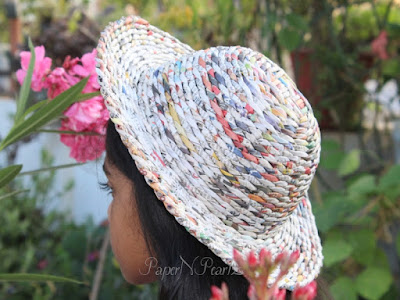This absolutely stunning variation of the Octagonal box from Tomoko Fuse's 'Joyful Origami Boxes' is my third attempt at folding the octagonal boxes. Each of these boxes that I have folded, I feel, is prettier than the previous one!
For this origami, I used some of my precious supply of double-sided paper - paper that is plain coloured on one side and printed with little flowers on the other. I absolutely love this paper and tend to use it very, very judiciously.
Page 72 of the book gives the directions for folding the variations - that is to say, Tomoko Fuse gives us the final module and it is left to us to figure out how to arrive at the module. But given that she has already described the makings of 4 other octagonal boxes, this is not that tough a challenge. A little bit of fiddling around using existing steps should bring us to the module.
Each paper square that I have used is 3 inches in size and the end result is an attractive box, about 2.5 inches across. The picture above shows the inside of the lid, which I think is as pretty as the outside! For the base, instead of using the same double-sided paper, I used red 3-inch squares of printer paper. That ensured that the base was very sturdy.
By the way, this module is the 4th variation shown in the book. I hope to try out more of the variations in the coming days.
Model Details:
Model: Octagon Box - 4th Variation
Creator: Tomoko Fuse
Book: Joyful Origami Boxes
Author: Tomoko Fuse
Difficulty Level: High Intermediate
Paper Ratio: Square
Paper Size: 3 inches
Model Size: 2.5 inches across
Number of Modules: 16









































